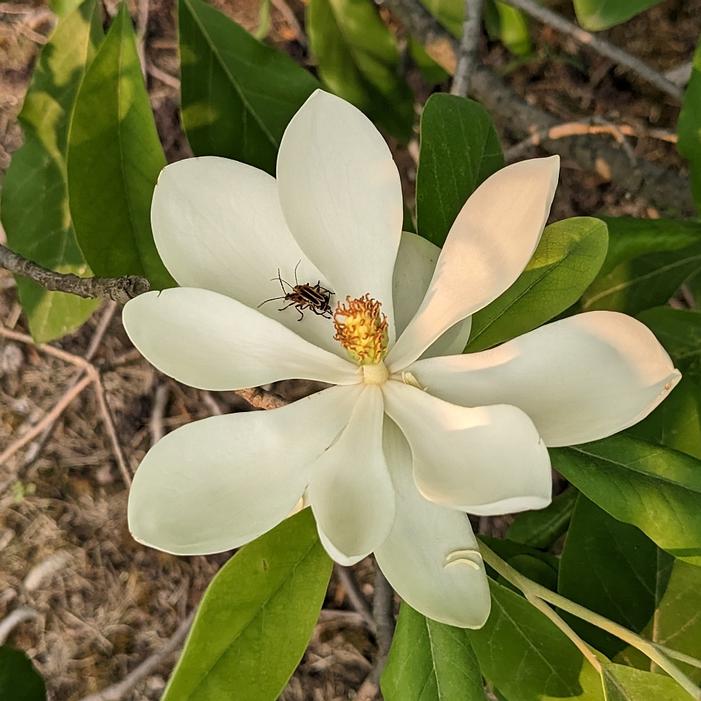View All Plants :: View All TREES
Magnolia virginiana 'Lone Star'
Sweetbay Magnolia
Plant Type:
TREESMagnolia virginiana 'Lone Star' (aka M. v. f. / var. ludoviciana, also "Texas form"; ex: Will Forster) - These are from cuttings furnished by Will Forster. Foliage is satin-finished in a deep, dark green shade. This Sweetbay Magnolia will form a tall handsome tree. Flowers, pubescent leaves and fruit are larger than other forms. And 'Lone Star' owns the genetic propensity to flower from May to October with a sweet scent touched with citrus but must be planted in constantly moist and rich soils. It is, however, a deciduous form. In the north one can expect a 25 to 35-foot tree in a couple of decades but taller in the south. 'Lone Star' descends from a Texan gene pool hence Will's chosen moniker. Moist, organic ground in full to part sun. Even wetter soils will work. Typical white-cream flowers stud the branches in summer for months on end. They emit a sweet scent with a hint of citrus. Established potted Magnolia from cutting.
Characteristics and Attributes for Magnolia virginiana 'Lone Star'
Season of Interest (Flowering)
- Spring / Summer / into Autumn
Season of Interest (Foliage)
- Spring / Summer / Autumn
Autumn Interest
- Fruit / Berries / Seed Heads
Nature Attraction
- Deer Resistant
- Butterflies
- Honey Bees & Native Bees
Light
- Morning Sun / Afternoon Shade
- Full Sun
- Mostly Sunny
Attributes
- Specimen
- Woodland
- Alee
- Natural Garden
Growth Rate in the Garden
- Moderately Fast
Soil
- Moist
- Draining
- Fertile
- Humus Laden
- Organic
Origins
- Texas
- Louisiana
Genus Overview: Magnolia
Common Name: Magnolia
The Magnolias are one of the earliest known flowering plants to establish themselves on our beautiful planet. Much breeding continues and the cultivar list is expanding with some smaller sizes and new flower colors. Many are typical tree forms while some tend to be multi-stemmed – more like huge shrubs than single-stemmed trees. Most are spring blooming – some early, others later after danger of frost has passed in the north. A few of these will provide some recurrence of bloom during the summer. A handful bloom in summer. Many emit wonderful fragrance. The foliage is often large, bold and paddle-shaped, looking attractive in summer; a handful of species’ leaves are so large that they are reminiscent of banana foliage. Some seasons they develop gold to golden brown autumn color before the leaves drop. It’s hard for me to think of a landscape without one or more included in the mix. All prefer fertile deep loam with plenty of organic matter and moist soils – some are even content in relatively wet conditions. Magnolias should be sited in full to half sun exposures. All our selections are cutting grown, on their own wood – they are not grafted. Some are much easier to produce on their own wood than others; some are quite recalcitrant. In that, we may not always have certain plants available or available in great numbers. Spring planting is recommended for magnolias especially up north. Cutting grown.


